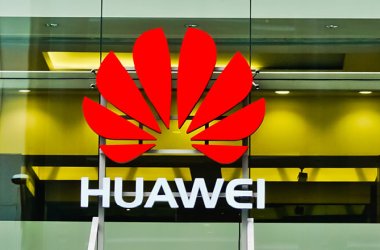 Huawei Technologies is aiming to bring touch-free smartphones and more inexpensive cloud storage to users, as the company boosts its research and development spending in order to bring “disruptive” technologies that will alter the market landscape.
Huawei Technologies is aiming to bring touch-free smartphones and more inexpensive cloud storage to users, as the company boosts its research and development spending in order to bring “disruptive” technologies that will alter the market landscape.
“We are focused on disruptive technology and taking interesting ideas and turning them into something exciting,” said John Roese, general manager for Huawei’s North American research and develop centre, on Friday.
The China-based company is best known as a supplier of telecommunication equipment. But the firm has been ambitiously expanding into both the consumer and enterprise sides of the technology business, aiming to provide products including Huawei branded smartphones, tablets along with servers and cloud computing offerings.
Last year, the company spent US$3.76 billion on research and development, resulting in 11,000 new employees hired for the company’s R&D efforts. For this year, Huawei’s R&D spending is expected to grow by 20 percent to about $4.5 billion.
Roese, who spoke to journalists on Friday, manages a research and development staff of 1,000 employees in North America, and was a former CTO for Nortel. One technology the company has been working on is touch-free smartphones, allowing the devices to read users’ hand gestures in order to initiate commands.
“What if you use the camera of a tablet or a smartphone and use it to capture the visualisation of your hands,” he said. “So imagine instead of touching a smartphone, you can actually have a three-dimensional interaction with it,” he said.
Touchscreen smartphones and tablets currently allow for the use of several fingers to issue certain commands when pressed on the display. But users only have five fingers on a hand, limiting the number of commands that can be made, Roese said.
Using hand gestures, however, would allow users to more easily bring objects forward, push them back or rotate them within the smartphone’s graphical user interface, he said.
Other companies already offer motion-sensing input. Microsoft for example uses motion sensing in its Xbox 360 Kinect device. Last month, Sony also announced the Android-based smartphone, the Xperia sola, which can read finger gestures to highlight links in text.
Huawei, however, expects its own touch-free smartphones will need a powerful graphics processor and also two front-facing cameras to fully read a user’s hand movements, according to Roese. The technology will be added incrementally over time, starting with small features, and likely start on tablets first, he added.
Last year, the company sold 20 million smartphones. But for 2012, the company plans to reach even higher, and has the goal of smartphone sales hitting 60 million units.
Outside of mobile phones, Huawei also wants to make cloud storage less expensive. The company has partnered with CERN, the European Organization for Nuclear Research, to investigate new storage techniques.
Through the partnership, Huawei’s cloud storage system is being used to process and store 15,360TB of physics data taken each year. Roese believes the research could revolutionise computing storage architecture.
“If we are successful, which I think we will be, it literally could change the economics of storage by an order of a magnitude,” he said. Suppliers could give infinite backup and only charge people when they needed to restore it, while still making money, he said.
“Of all the projects, and there are lots of good projects, that is the one that could have a profound impact on the market,” he added.




